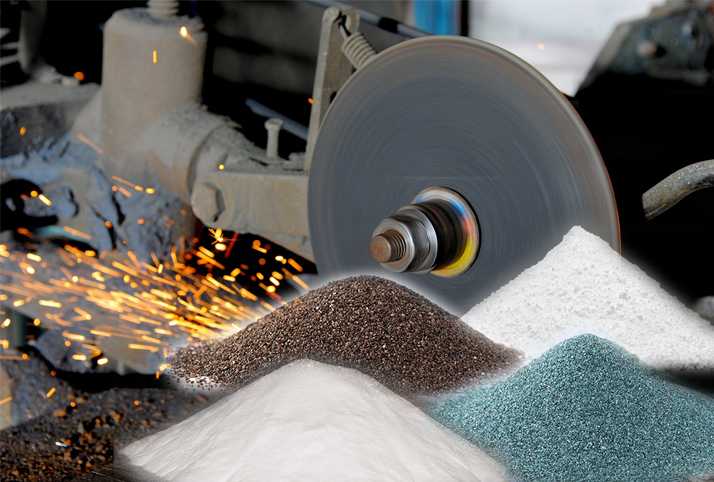
Abrasives can be divided into four groups according to their particle size: abrasive grains, milling powder, micropowder and superfine powder. Among them, the particle size number of the two groups of abrasive grains and grinding powder is expressed by the number of meshes on the length of each inch of the screen, and the symbol is to add the “#” symbol to the upper right corner of the number of the particle size number. For example, 240# means that there are 240 holes in each inch of screen length, and the larger the value of the particle size number, the finer the abrasive grains. The particle size numbers of the two groups of abrasives, micropowder and ultrafine powder, are represented by the actual size of the particles, and the symbol is to add a letter “W” in front of the particle size number. For example, W20 means that the actual size of the abrasive particles is between 20 μm and 14 μm.
The “grain size” we often say is actually the “grain size number”, which is a mark to distinguish the grain size of abrasives. The national standard uses the sieving method to test it. For example, 80/100 is a particle size number. Its nominal size range is 150-180 μm, which means superhard abrasives falling between two layers of sieves with mesh sizes of 180 μm and 150 μm.
Among them, the abrasive on the upper limit sieve is the coarsest, that is, the so-called large particles, which need to be strictly limited. If there are defects such as “scratch” on the workpiece, the abrasive on the upper inspection sieve is coarse; The ones on the lower inspection sieve are basic grains; the ones under the lower inspection sieve are fine grains; the ones under the lower limit sieve are the finest grains.
With the increase of international exchanges, domestic superhard abrasive products often need to be “standardized” with similar foreign products, but the standards of each country are different, so we must pay attention when selecting the “granularity number”.
The particle size is a parameter describing the roughness of the abrasive surface. The larger the value of the particle size number, the smaller the abrasive particles and the smaller the roughness. When selecting the particle size of the abrasive, it should be selected mainly according to the requirements of machining accuracy, workpiece surface roughness and grinding efficiency.
Generally speaking, if the workpiece to be ground needs to have a higher roughness, then a coarse-grained abrasive should be selected; conversely, if the surface roughness of the workpiece is required to be low, then a fine-grained abrasive should be selected.
If the workpiece has high requirements on geometric accuracy, the contact area between the grinding wheel and the workpiece is also a factor that needs to be considered. If the contact area is small, fine grain size should be selected; when the contact area is large, coarse grain size should be selected.
When the workpiece requires high geometric accuracy and low surface roughness at the same time, then the mixed particle size abrasive should be selected.
If the material of the workpiece is hard and brittle, it is not suitable to use coarse-grained abrasives, but fine-grained abrasives should be selected; on the contrary, if the material is relatively hard and tough, coarse-grained abrasives should be selected.
If the thermal conductivity of the workpiece is not good, it is easy to generate heat and deform, or it is easy to burn, then a coarser-grained abrasive should be selected.
